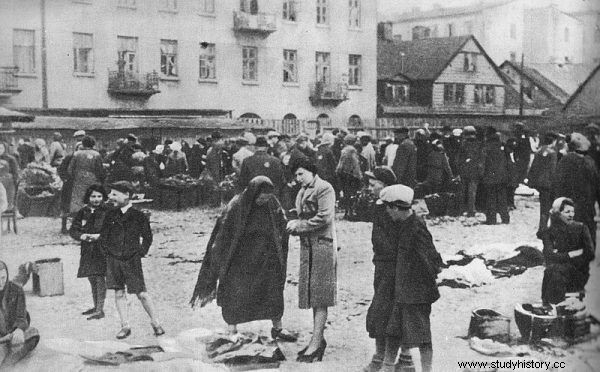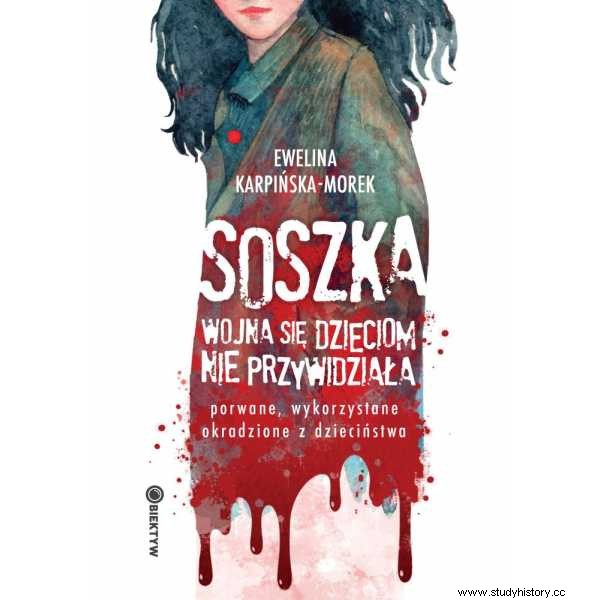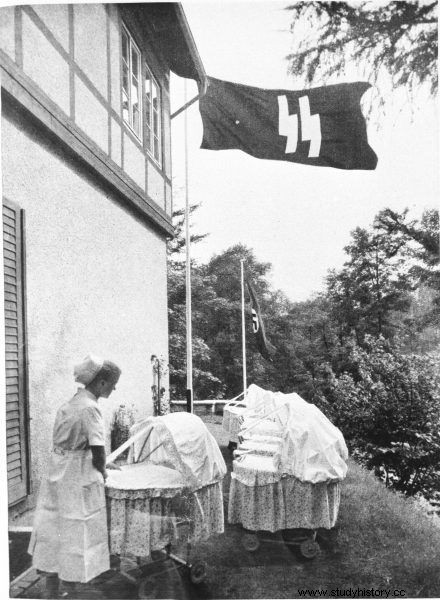The files available at the Institute of National Remembrance contain the fates of people, sometimes entire families, who ended up in Łódź in binders. In the years 1939–1945 in the camp at Sporna, the German authorities carried out regular extermination of Polish children and adolescents. Because they were not properly racially "pure"…
The contrast between what is outside the window on ul. Reformacka in Krakow, where I read files, and what a person just feels when recreating individual events from childhood, moments of staying in the camps of Łódź, is gloomy. The described situations seem distant, unreal.
"We'll go to heaven with this note"
One of the press clippings shows the face of an Untersturmfuehrer named Tyarks. He was active in the race camp on Sporna Street. At the request of the District Commission for the Investigation of Nazi Crimes in Łódź, the local press published his photo in 1971 and began searching. "Does anyone know him?" - asked in the headlines of newspapers.
The way the camp in Sporna operated can be recreated from the numerous testimonies that have survived in the files of the investigation into the extermination of Polish children and youth in 1939-45 by the Nazi authorities.
“In January 1941, I was taken with my mother - like many Polish families at that time - to a camp in Łódź. As I recall, we were placed in a large factory hall and kept there for several days. Then we were taken to another place, where the factory hall was also used as a room. There were a lot of families there.
After a few days, we were called to a special room and we stood before a commission consisting of a dozen uniformed Germans. They were officers from the SS formation, because they had skulls on their caps. Then I was superficially examined:my head and hands were examined, my height was measured. My mother has not been examined. After these activities my mother received a note.
When we left this room, one of the Poles told us that we were lucky because we would go to heaven with this note. It meant that we were qualified to go to Germany. Families who did not receive such cards were taken to the General Government.

The camp in Łódź was established in the ghetto.
On the same day, everyone with the cards was taken again to some room, where we were disinfected. After bathing, we were taken to rooms at Sporna Street. (...) There I was subjected to several hours of examination. The study was very detailed. We were given all kinds of measurements of the head, hands, feet and height. My mother was also examined. After the tests, as I recall, my mother was told:if it weren't for your daughter, who had been qualified for the second Rassendeutsch group, you would never have gone to Germany.
Most likely, the Germans from the race office were not sure about me because of my mother, because they brought my father, who was in captivity in Stalag III B. «Thoroughbred» ”.
Find out more:Families being separated, refusal of a dignified burial of the dead, forced abortions ... Poles who found work in Germany during World War II had no rights.
Headband with the letter "P"
Were it not for the plate with the number, we could get the impression that we are looking at a traditional family photograph taken in a pre-war studio. What is missing is the ivy column and the painted wall with a curtain in the background. Mom is sitting in a chair. They look rather normal, maybe even smile a little, keeping the seriousness that accompanied the photographs from the first half of the 20th century. During the testimony, Aleksandra Chałupniczak shows a photo taken in the race camp at Sporna Street.
"At the time of photographing, the number 1060 was placed on my father's feet. Moreover, as I recall, I was also photographed alone, without my parents, on all three sides, giving the same number (...)". In this way, among others, children destined for Germanization were photographed.

The text is an excerpt from Ewelina Karpińska-Morek's book “Soszka. Children did not dream of war ”, which has just been published by Wydawnictwo M.
“My family's further fate was when we were taken to Hildesheim near Hannover. We received one room in an old people's home in this town. We lived there for about a year and a half. Then we were given an apartment consisting of two rooms and a kitchen in Langerhagenstrasse. My father worked as a post office worker. The mother was employed by a German woman with a large family. I, on the other hand, went to a German school. Despite the fact that we were Poles, my parents did not need to wear the letter "P" "- we read in the testimony of Aleksandra Chałupniczak.
Armbands with the letter "P" were worn mainly by forced laborers, although not all farmers stuck to it. The context in which the witness testimony is based allows us to conclude that the whole family was selected for Germanization, despite doubts about the mother.
Lebensborn's "Charities"
“We also received food stamps according to the standards for Germans. We were constantly under control. We were checked at home, how we behave, whether we speak German, and we were interested in the results of my schooling. During one of these checks, I learned from the inspector that when I turn 18, I will have to marry a German. In the event that I do not get married, I will be placed in a special institution and give birth to children there. The state of such checks lasted until the end of the war. ”
These special establishments, about which the person controlling her development and progress at school was supposed to inform Aleksandra Chałupniczak, were probably Lebensborn centers. However, since Lebensborn was presented as a charity during the Nuremberg trials and there is a dispute to this day about the way of perceiving and interpreting its activities, scaring the young girl with Lebensborn seems to clearly indicate the goals of the organization that the Germans quite successfully diluted.

Children born at Lebensborn.
For beautifully equipped Lebensborns were admitted, inter alia, to unmarried women who could safely give birth to illegitimate children, thus avoiding disgrace.
Thanks to the "caring" activities of the Lebensborn centers, German society was to be filled with Aryan, racially valuable children. However, as it turned out, this organization did not work very effectively. The asset that Lebensborn contributed to the German society in this regard was only 11,000. kids. It's not much.
As the German writer and journalist, Volker Koop, who specializes in historical topics, notes, "it was only a part of the activities of this institution and this fact cannot obscure the crime of depriving innocent children of their identity in Poland, Czechoslovakia, Yugoslavia and Russia - since At the beginning of World War II, one of the main tasks of the Lebensborn was to rob "racially valuable" children from areas occupied by German troops, mainly from eastern Europe. "
Read also:The goal:to create an army of "racially pure" Aryans and "renew German blood". To achieve it, in 1935 the Nazis launched a program of… breeding people.
Source:
The text is an excerpt from Ewelina Karpińska-Morek's book “Soszka. Children did not dream of war ”, which has just been published by Wydawnictwo M.
